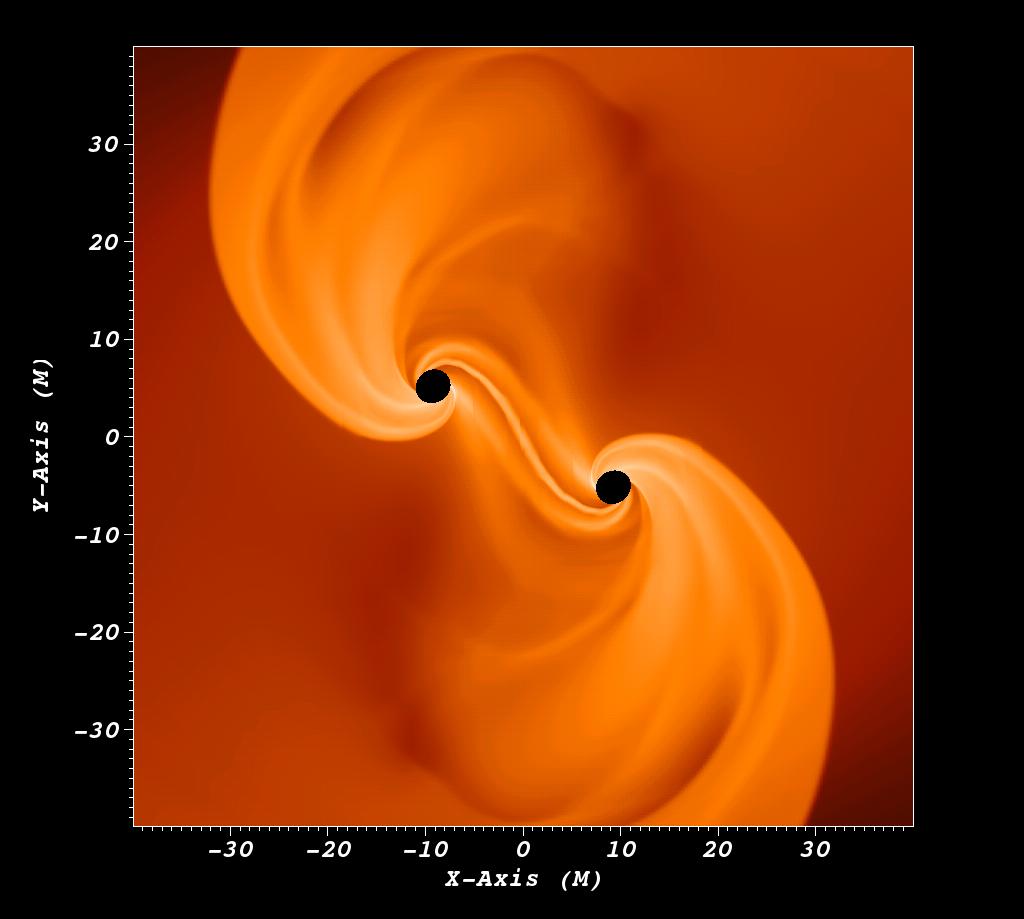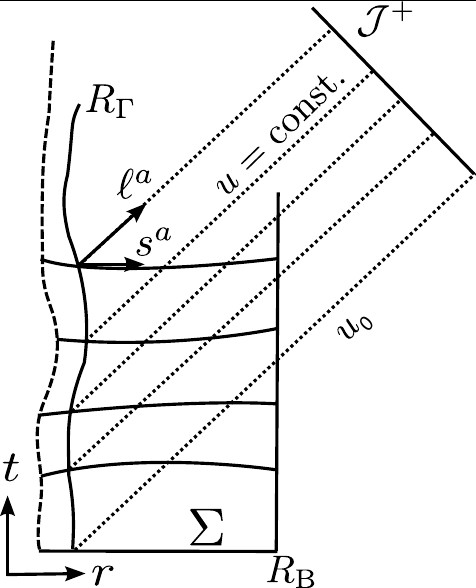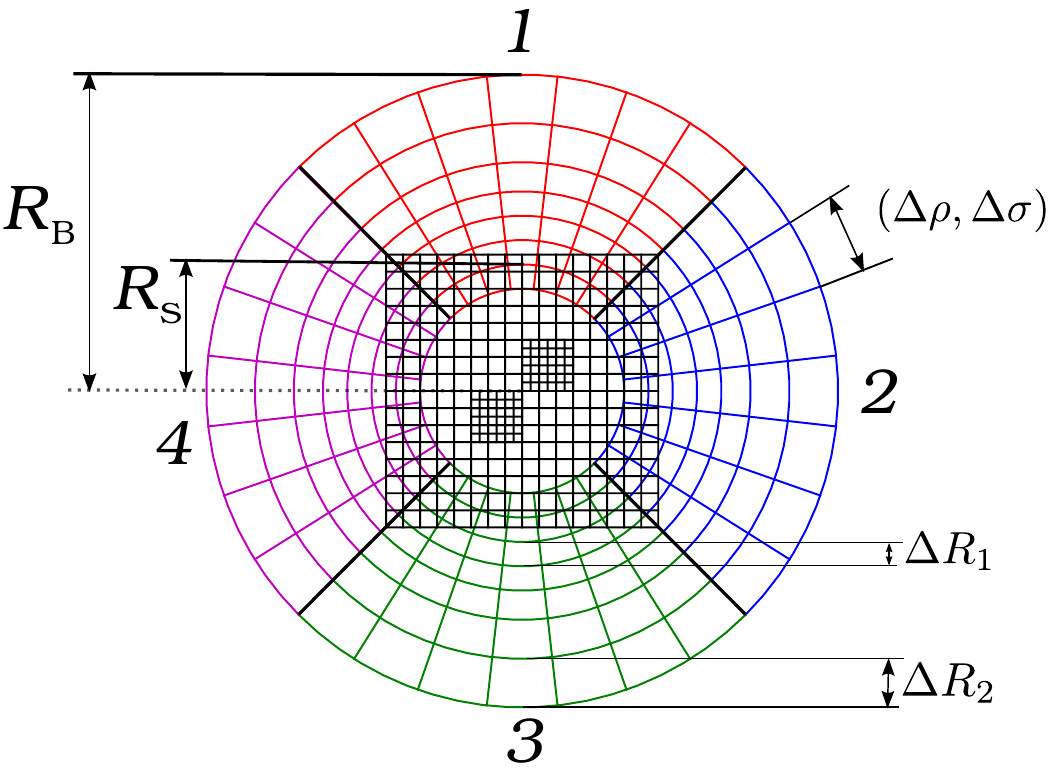Past Achievements
My scientific background is in numerical relativity simulations, computational methods, and gravitational-wave source modeling.
In the past years while at Caltech, I have significantly expanded my horizon towards astrophysical systems, including collapsing massive and supermassive stars, as well as binary neutron star mergers.
During almost ten years in the field, I have made notable contributions to the numerical relativity and gravitational-wave (GW) modeling communities in the context of binary black hole (BBH) mergers, GW extraction techniques, core-collapse supernovae modeling, black hole (BH) formation, and simulations of protomagnetars. I have used and co-developed the grid-based adaptive mesh refinement (AMR) simulation framework Cactus, Carpet, and the Einstein Toolkit to solve the fully non-linear Einstein equations coupled to magnetohydrodynamics on massively parallel computers.
 Recently, I have shown that it is possible to form a merging BBH system during the collapse of a single supermassive star. The formation of two BHs is made possible by a non-axisymmetric instability encountered by rapidly rotating and radiation pressure dominated collapsing stars that leads to fragmentation. Electron-positron pair creation at high temperatures above 10^9 K causes further loss of pressure, and accelerates the collapse in each fluid fragment, eventually forming an event horizon around each fragment. The collapse of supermassive stars is a possible way of explaining the puzzling existence of supermassive BHs in the very early universe at high redshifts z>7. Since the formation of a pair of BHs from just one supermassive star gives rise to very powerful gravitational radiation that can be seen from the edge of our universe with space-borne GW observatories, an observed GW signal may inform cosmology about the possible formation processes of supermassive BHs when the universe was less than 1 Gyr old. This particular work led to a press release that was picked up by newspapers and popular science magazines around the world.
Recently, I have shown that it is possible to form a merging BBH system during the collapse of a single supermassive star. The formation of two BHs is made possible by a non-axisymmetric instability encountered by rapidly rotating and radiation pressure dominated collapsing stars that leads to fragmentation. Electron-positron pair creation at high temperatures above 10^9 K causes further loss of pressure, and accelerates the collapse in each fluid fragment, eventually forming an event horizon around each fragment. The collapse of supermassive stars is a possible way of explaining the puzzling existence of supermassive BHs in the very early universe at high redshifts z>7. Since the formation of a pair of BHs from just one supermassive star gives rise to very powerful gravitational radiation that can be seen from the edge of our universe with space-borne GW observatories, an observed GW signal may inform cosmology about the possible formation processes of supermassive BHs when the universe was less than 1 Gyr old. This particular work led to a press release that was picked up by newspapers and popular science magazines around the world.
 I have developed and applied the GW extraction technique of Cauchy-characteristic extraction (CCE) to simulations of BBH mergers to compute the first unambiguous and gauge-invariant GW signal ever extracted for that problem, allowing me to measure, for the first time, the non-linear memory effect in BBH mergers. Gauge-invariant and mathematically unambiguous GW extraction remained a decade-long problem, and I was able to show that much simpler approximate methods become the limiting factor in terms of accuracy when the numerical resolution is further increased. Later, I successfully applied this technique to general relativistic hydrodynamic simulations of stellar core collapse and binary neutron stars. Previous work on stellar collapse exclusively made use of the simplified quadrupole approximation which breaks down in models of BH formation. Subsequently, I and collaborators extracted the first complete GW signal in collapsar formation by self-consistently simulating the entire dynamics from stellar core collapse, to protoneutron star (PNS) formation, BH formation and early hyperaccretion.
I have developed and applied the GW extraction technique of Cauchy-characteristic extraction (CCE) to simulations of BBH mergers to compute the first unambiguous and gauge-invariant GW signal ever extracted for that problem, allowing me to measure, for the first time, the non-linear memory effect in BBH mergers. Gauge-invariant and mathematically unambiguous GW extraction remained a decade-long problem, and I was able to show that much simpler approximate methods become the limiting factor in terms of accuracy when the numerical resolution is further increased. Later, I successfully applied this technique to general relativistic hydrodynamic simulations of stellar core collapse and binary neutron stars. Previous work on stellar collapse exclusively made use of the simplified quadrupole approximation which breaks down in models of BH formation. Subsequently, I and collaborators extracted the first complete GW signal in collapsar formation by self-consistently simulating the entire dynamics from stellar core collapse, to protoneutron star (PNS) formation, BH formation and early hyperaccretion.
I have also significantly enhanced my simulation package (that is used by a large fraction of the numerical relativity community) by developing a multiblock scheme combined with conservati ve adaptive mesh refinement. Multiblocks is a technique that allows one to cover the simulation domain with multiple curvilinear grid patches. Thus, it becomes possible to adapt the computational domain to the problem symmetry. As a result, my simulations became more efficient and accurate, and represent the state-of-the-art in numerical relativity. For instance, I was able to extract the higher order GW modes from binary neutron star mergers with unprecedented accuracy. The code is publicly available as part of the Einstein Toolkit to foster open science and to allow the numerical relativity community (and beyond) to benefit from this progress.
ve adaptive mesh refinement. Multiblocks is a technique that allows one to cover the simulation domain with multiple curvilinear grid patches. Thus, it becomes possible to adapt the computational domain to the problem symmetry. As a result, my simulations became more efficient and accurate, and represent the state-of-the-art in numerical relativity. For instance, I was able to extract the higher order GW modes from binary neutron star mergers with unprecedented accuracy. The code is publicly available as part of the Einstein Toolkit to foster open science and to allow the numerical relativity community (and beyond) to benefit from this progress.
Notably, this code also enabled the first 3D general relativistic simulations of core-collapse supernovae with neutrino microphysics. In this study, I and collaborators studied the three-dimensional dynamics of two competing hydrodynamic instabilities (convection and the standing accretion shock instability) that may enhance neutrino heating in neutrino-driven shock revival in core-collapse supernovae. In a follow-up study, I and collaborators investigated in detail the dependence on neutrino heating efficiency, as well as resolution.
I have also studied in detail the full-non linear merger dynamics of BBH systems, including properties of the merger remnant such as kick velocities, final spins, and radiated energies. For all remnant properties, I and collaborators constructed phenomenological formulas based on parameter space studies. These formulas find application in N-body simulations where full non-linear evolutions of BBH systems are unfeasible. I have also investigated the emitted GW signals and the associated detectability by next-generation ground-based and space-borne GW interferometers, and have helped in the construction of BBH GW template banks that are used for identifying signals from the LIGO detector data stream
